Behind the scenes of Tuscany Trail 2025: interview with the founder
Leggi questo articolo in italiano.
In this interview, we had the pleasure of speaking with Andrea Borchi, founder of the Tuscany Trail, on the occasion of the announcement of the big news for the 2025 edition. The Tuscany Trail, which confirms itself as the largest bikepacking event in the world with nearly 5,000 participants, is ready to surprise cyclists from all over the globe once again. Let’s discover together what new features will make this twelfth edition even more extraordinary.
It seems there are important news for the 2025 Tuscany Trail edition, can you confirm?
Despite 12 years having passed since the first edition, we still manage to renew the event every year, always offering new reasons to participate. This allows us to attract bikepacking enthusiasts from all over the world and to bring back those cyclists who have already experienced the adventure even five or six times in a row. And for the 2025 edition too, we have introduced many new features that are already partly visible on the Tuscany Trail website.
The most important news seems to be undoubtedly the change of location, with Campiglia Marittima becoming the new starting and finishing point of the Tuscany Trail 2025. Why was this decision made?
Over these years, we have always had a single goal: to offer the best possible experience to all those people who choose to live the Tuscany Trail. Our priority is to ensure that every cyclist can fully immerse themselves in the journey through Tuscany. Until now, we have mainly focused on the route, but over time the event has grown enormously, bringing with it new challenges, especially at a logistical level.
In past years, starting and finishing in Castagneto Carducci worked well and always received very positive feedback. However, with the increase in the number of participants, we realized that a change was necessary. We needed a larger space that could better manage the growing flow of people. After careful research, we chose Campiglia Marittima, a location that offers not only a fascinating context, but also a perfect exhibition structure as a new starting and finishing point. This will allow us to offer participants more efficient and comfortable logistics, with ample indoor and outdoor spaces.
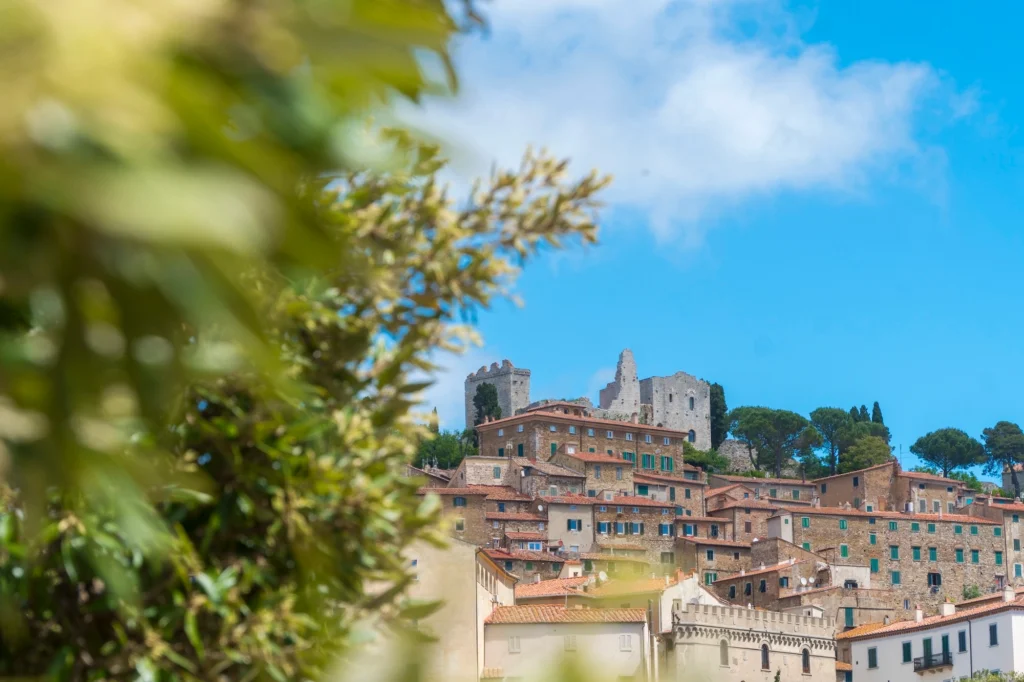
Campiglia Marittima is not only a perfect logistical solution, but it represents an authentic Tuscany, one that has remained intact because it has stayed off the beaten paths of mass tourism. It’s a place that has preserved its soul, where time seems to have stood still and where you can breathe the typical tranquility of ancient villages. From its fortress, you can admire a spectacular view that ranges from the Val di Cornia, to the Piombino promontory, to the Island of Elba, and on clearer days, you can even see Corsica. It’s the ideal starting point for an event like the Tuscany Trail, immersed in a less known Tuscany, but one that more than any other represents the true essence of this land.
Regarding the route, are there any significant changes or new features?
Definitely yes, there are two main new features for the Tuscany Trail 2025 route. The first concerns a complete renewal of the track. The main highlights, such as Siena, Val d’Orcia, and San Gimignano, will remain unchanged, because these are the places that have contributed to the growth of the event and have made participants fall in love year after year. However, the way these points are connected has been revised. We have worked to insert new passages that will allow cyclists to explore less known corners of Tuscany, maintaining the focus on an authentic Tuscany, off the traditional tourist routes. As every year, the definitive track will be published shortly before the opening of registrations, which this year will take place on December 3rd.
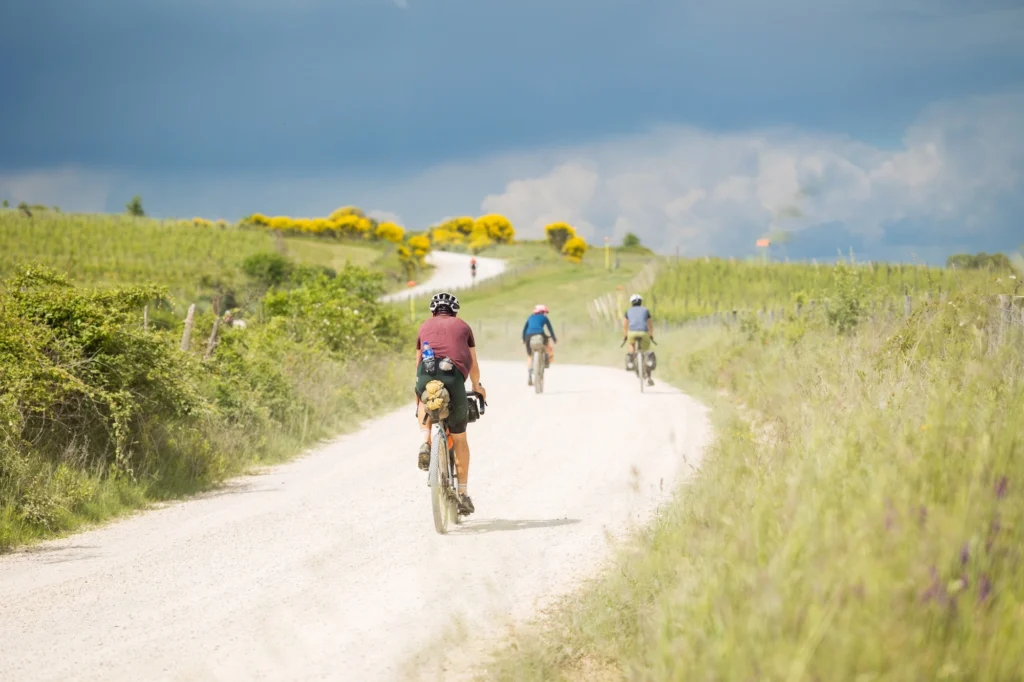
The second big news is the introduction of a new route called Tuscany Trail for Newbies, a track of about 180 kilometers designed for those approaching bikepacking for the first time or for those who have less time or fewer kilometers in their legs. The peculiarity of this route is that the first day will be shared with the participants of the classic route, allowing new cyclists to experience the atmosphere and enthusiasm of the group. On the second day, however, they will follow an itinerary specially created for them, which will bring them back to Campiglia Marittima.
We think this new feature makes the Tuscany Trail even more inclusive, because now even those who dream of a bicycle adventure but fear they won’t be able to complete the longer route, will have the opportunity to participate. Moreover, while it’s an adventure, we’re not talking about an extreme experience in an isolated desert. We’re always in Tuscany, in a context rich in logistical support: along the route there are villages, bars, and restaurants, where participants can refuel and take a break. This doesn’t take anything away from the sense of adventure, but it guarantees a safety and usability that allow more people to live this experience to the fullest.
Are there new or enhanced services for participants in 2025?
Although the Tuscany Trail remains an unsupported event, where participants face the route only with their own strength, we have always tried to facilitate their journey through Tuscany. The idea is that, while not providing services such as luggage transport or assistance along the route, we still want to offer opportunities to make the experience more fluid and satisfying.
With this in mind, already from last year we introduced the Base Camps, an addition much appreciated by the participants. Base Camps are points along the route where cyclists can pitch their tent, creating real aggregation spaces. Some of these camps are completely free, while others may require a small donation, but the important aspect is that they offer participants a safe and shared place to rest.
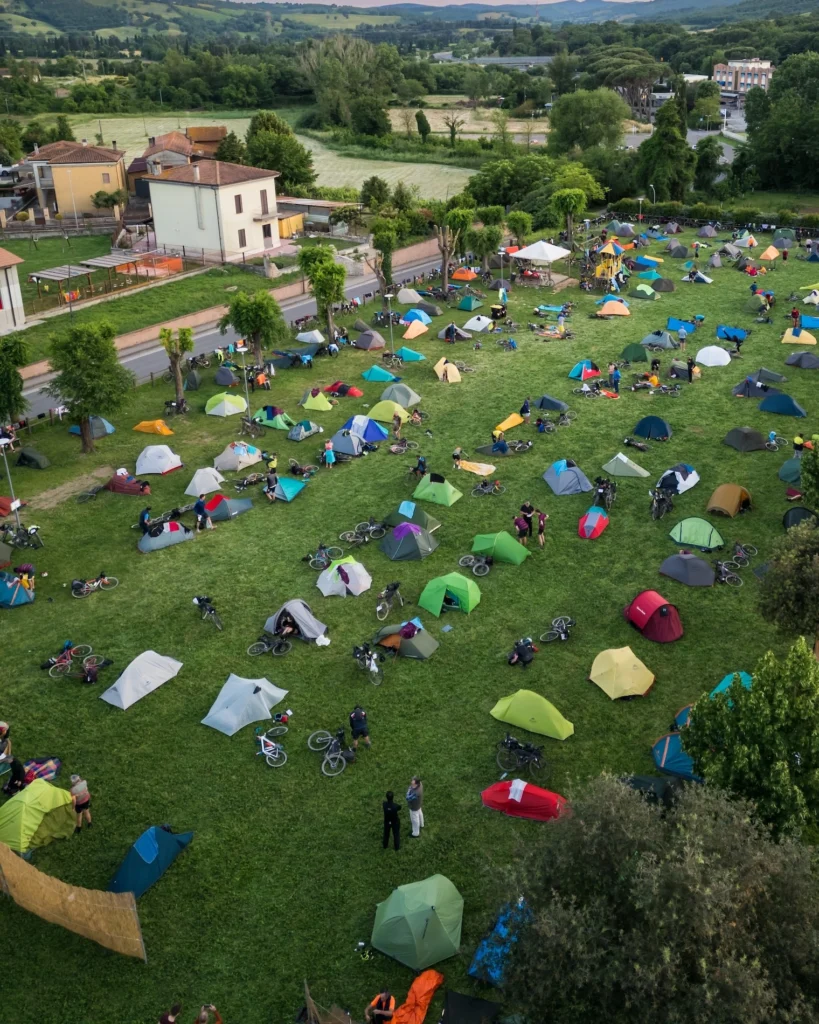
The beauty of the Tuscany Trail is that, even if everyone experiences the journey at their own pace – some stop to take photos, some take a dip in the sea, some prefer to pedal until late – everyone knows that along the route there are these meeting points where they can find each other. The Base Camps thus become real meeting points, where in the evening cyclists can dine together, exchange stories of the day, and deepen the friendships born along the way. It’s a moment of sharing that further enhances the experience of the Tuscany Trail.
For the 2025 edition, we are working to further enhance the Base Camps. We have new collaborations underway with the territories to increase the number of these points and improve their structures. Obviously, the organization of an event like the Tuscany Trail is complex and involves many local realities, so the details on the new Base Camps will be updated on the website as agreements are confirmed. Moreover, within the guide that will be given to all participants, there will be a dedicated section with all the information on the Base Camps and how to access them.
The king of questions: what’s the best bicycle to tackle the Tuscany Trail 2025 route? A gravel or a mountain bike?
The debate between gravel and mountain bike emerges every year, and it’s understandable. The Tuscany Trail is a historic event, born in 2013, when gravel bikes practically didn’t exist. At that time, the only real option was the mountain bike, and it’s on this type of bike that the original route was conceived.
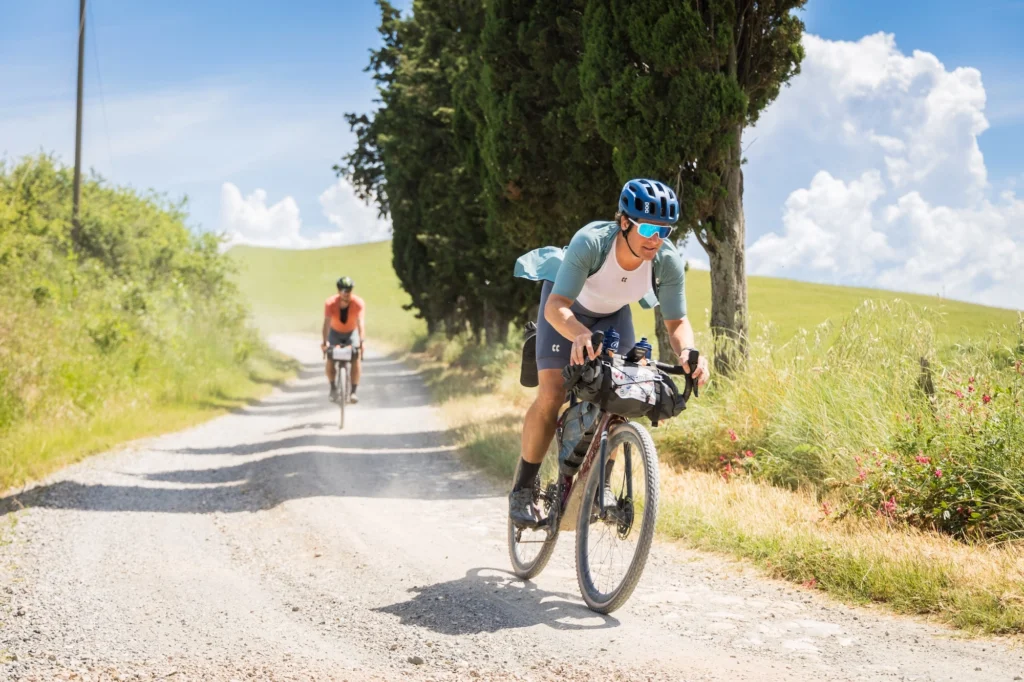
Over the years, however, things have changed. Gravel bikes have started to take hold and the Tuscany Trail route has adapted accordingly. Our goal has always been to make cyclists live the best possible experience, allowing them to pedal with their heads held high, enjoying the landscapes. This has naturally led the route to become increasingly suitable for gravel bikes.
That said, the Tuscany Trail is now absolutely suitable for gravel bikes. However, on a route of about 450 km, it’s normal to encounter more technical or challenging sections, of a few hundred meters, where those who are not very familiar with gravel bikes might prefer to get off and push. This is completely normal and part of the off-road experience.
For those who don’t feel completely comfortable with a gravel, or don’t have one, we recommend opting for a 29-inch mountain bike, maybe a hardtail. So, the answer is: yes, you can do it with a gravel or with a mountain bike, it depends on what makes you feel better. Our advice is always to choose the bike that gives you the best emotions. At the Tuscany Trail you’ll see everything: gravel, mountain bikes, hardtail bikes, full suspension, fat bikes, even e-bikes. The important thing is to have fun and enjoy the adventure.
In conclusion, why is the Tuscany Trail such a special event for bikepacking lovers from all over the world?
In these 12 years, we have always maintained a clear promise: to offer participants the best possible experience on an off-road route in the heart of Tuscany. Every year we strive to respect this promise, and the numbers speak for themselves: at the end of the event we always send out a satisfaction questionnaire, and 94% of participants tell us they would recommend the experience to a friend. This means that our promise has been kept in the vast majority of cases, and this is what has made the Tuscany Trail so loved over the years.
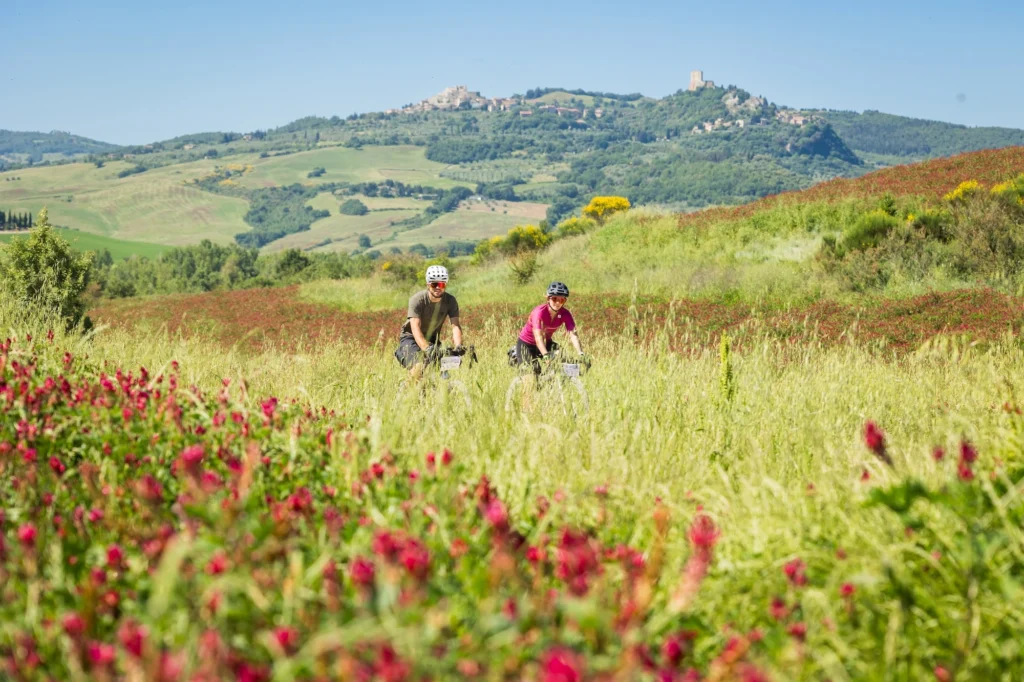
Participating in the Tuscany Trail means immersing yourself in an experience that goes beyond simply cycling. Tuscany is a magical place, a true natural bike park for cyclists, and the event offers a 360-degree experience: breathtaking landscapes, historic villages like Siena and San Gimignano, and the food and wine richness that only this region can offer. Pedaling through these lands means breathing clean air, admiring nature, and immersing yourself in local culture.
But the Tuscany Trail is not just a spectacular route. It’s a global party that attracts thousands of cyclists from all over the world every year, united by the same passion and values. The atmosphere of sharing, the spirit of adventure, and the bond that is created among participants make this event unique.
In 12 years, the event has grown, and every year, we see more and more people who want to live this experience at least once in their lives. Some participants return for the tenth time because they know that the Tuscany Trail is much more than a simple challenge: it’s a life experience.


Add comment